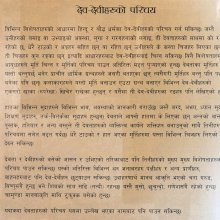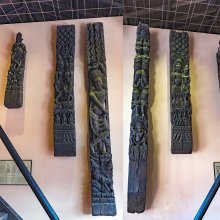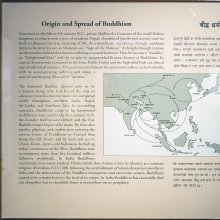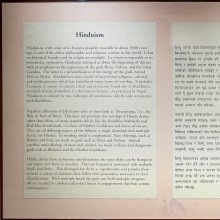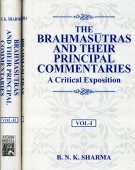Mukhya, Mukhyā: 22 definitions
Introduction:
Mukhya means something in Hinduism, Sanskrit, Buddhism, Pali, the history of ancient India, Marathi, Hindi. If you want to know the exact meaning, history, etymology or English translation of this term then check out the descriptions on this page. Add your comment or reference to a book if you want to contribute to this summary article.
Alternative spellings of this word include Mukhy.
Images (photo gallery)
In Hinduism
Purana and Itihasa (epic history)
Source: Cologne Digital Sanskrit Dictionaries: The Purana Index1) Mukhya (मुख्य).—The gods of Sāvarṇi epoch.*
- * Viṣṇu-purāṇa III. 2. 15.
2) Mukhyā (मुख्या).—The fifth entrance on the east of the city of Puramjana. Through this Puramjana went to the kingdoms of Āpaṇa and Bahūdana with his companions Rasajña and Vipaṇa; allegorically the mouth.*
- * Bhāgavata-purāṇa IV. 25. 49; 29. 11.

The Purana (पुराण, purāṇas) refers to Sanskrit literature preserving ancient India’s vast cultural history, including historical legends, religious ceremonies, various arts and sciences. The eighteen mahapuranas total over 400,000 shlokas (metrical couplets) and date to at least several centuries BCE.
Shaktism (Shakta philosophy)
Source: Wisdom Library: ŚāktismMukhya (मुख्य) refers to one of the 53 gods to be worshipped in the northern quarter and given pāyasa (rice boiled in milk) according to the Vāstuyāga rite in Śaktism (cf. Śāradātilaka-tantra III-V). The worship of these 53 gods happens after assigning them to one of the 64 compartment while constructing a Balimaṇḍapa. Vāstu is the name of a prodigious demon, who was killed by 53 gods (e.g., Mukhya).
Source: Brill: Śaivism and the Tantric Traditions (shaktism)Mukhya (मुख्य) refers to the “best (soldiers)”, according to the Mahābhārata 10.8.64–68.—Accordingly, “Good sir, they saw her, Kālarātri, standing, smiling, alone, blue-black in hue, with red mouth and eyes, garlands and unguents of crimson, red robes, a noose in one hand, a peacock feather [in her hair], binding men, horses and elephants with her horrifying fetters while she stood, capturing many headless ghosts trapped in her noose, leading those asleep in their dreams to other Nights. And at all times the best soldiers (yodha-mukhya) saw the son of Droṇa slaughtering. From the time when the battle between the Kuru and Pāṇḍava armies began, they saw [both] that evil spirit and the son of Droṇa. The son of Droṇa later felled those who had first been struck by this divinity [Kālarātri], terrorizing all creatures while shouting out ferocious bellows”.

Shakta (शाक्त, śākta) or Shaktism (śāktism) represents a tradition of Hinduism where the Goddess (Devi) is revered and worshipped. Shakta literature includes a range of scriptures, including various Agamas and Tantras, although its roots may be traced back to the Vedas.
Vyakarana (Sanskrit grammar)
Source: Wikisource: A dictionary of Sanskrit grammarMukhya (मुख्य).—Main, , principal, primary substantive as contrasted with a gualifying substantive;cf.गौणमुख्ययो-मुख्ये कार्यसंप्रत्ययः (gauṇamukhyayo-mukhye kāryasaṃpratyayaḥ) Par. Sek. Pari. 15.

Vyakarana (व्याकरण, vyākaraṇa) refers to Sanskrit grammar and represents one of the six additional sciences (vedanga) to be studied along with the Vedas. Vyakarana concerns itself with the rules of Sanskrit grammar and linguistic analysis in order to establish the correct context of words and sentences.
Jyotisha (astronomy and astrology)
Source: Google Books: Studies in the History of the Exact Sciences (Astronomy)Mukhya (मुख्य) refers to the “foremost” (among the [time measuring] instruments), according to Govinda Daivajña’s Pīyūṣadhārā (verse p.424), a commentary on Rāma Daivajña’s Muhūrtacintāmaṇi (AD 1600).—Accordingly, “[...] After having seen the rise of half of the Sun’s orb, or the setting of the half likewise, the instrument having the aforementioned characteristics should be deposited, with this sacred formula. [...] ‘You have been created a long time ago by Brahma as the foremost among the [time measuring] instruments [i.e., mukhya-yantra]. Therefore, for increasing the longevity of the couple and for conferring on them sons, wealth and the like, O water clock of mine, grant them the fulfilment of their desires’.”.

Jyotisha (ज्योतिष, jyotiṣa or jyotish) refers to ‘astronomy’ or “Vedic astrology” and represents the fifth of the six Vedangas (additional sciences to be studied along with the Vedas). Jyotisha concerns itself with the study and prediction of the movements of celestial bodies, in order to calculate the auspicious time for rituals and ceremonies.
Shaivism (Shaiva philosophy)
Source: Brill: Śaivism and the Tantric Traditions (philosophy)Mukhya (मुख्य) refers to the “main argument”, according to the Īśvarapratyabhijñāvimarśinī 1.178.—Accordingly, “And there is no argument proving [the existence] of the [external object], and the main (mukhya) [argument] refuting [its existence] amounts to this much: the fact that there [can] be no manifestation (prakāśana) [of it] even as a [mere] object of inference if [this object] is distinct from the manifesting consciousness (prakāśa)?”.

Shaiva (शैव, śaiva) or Shaivism (śaivism) represents a tradition of Hinduism worshiping Shiva as the supreme being. Closely related to Shaktism, Shaiva literature includes a range of scriptures, including Tantras, while the root of this tradition may be traced back to the ancient Vedas.
Vastushastra (architecture)
Source: Brill: Śaivism and the Tantric Traditions (architecture)Mukhya (मुख्य) refers to one of the deities to be installed in the ground plan for the construction of houses, according to the Bṛhatkālottara, chapter 112 (the vāstuyāga-paṭala).—The plan for the construction is always in the form of a square. That square is divided into a grid of cells (padas). [...] Once these padas have been laid out, deities [e.g., Mukhya] are installed in them. In the most common pattern 45 deities are installed.
Nāga as a doorway deity is associated with the Nakṣatra called Uttarabhadraka and the consequence is pradhānatva. [...] The Mayasaṃgraha (verse 5.156-187) describes a design for a 9-by-9-part pura, a residential complex for a community and its lead figure. [...] This record lists a place for flowers at Nāga, Mukhya and Bhalvāṭa (ahitraye).
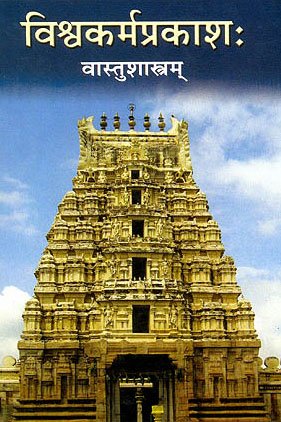
Vastushastra (वास्तुशास्त्र, vāstuśāstra) refers to the ancient Indian science (shastra) of architecture (vastu), dealing with topics such architecture, sculpture, town-building, fort building and various other constructions. Vastu also deals with the philosophy of the architectural relation with the cosmic universe.
India history and geography
Source: Cologne Digital Sanskrit Dictionaries: Indian Epigraphical GlossaryMukhya.—(EI 32), city elder; member of the city council. Cf. Hindī Mukhiyā, a village elder. (CII 1), chief officer. (EI 16), see mukha meaning ‘head’, ‘heading’ or ‘sum’. mukhy-āhāra, cf. mukha-āhāra. Note: mukhya is defined in the “Indian epigraphical glossary” as it can be found on ancient inscriptions commonly written in Sanskrit, Prakrit or Dravidian languages.

The history of India traces the identification of countries, villages, towns and other regions of India, as well as mythology, zoology, royal dynasties, rulers, tribes, local festivities and traditions and regional languages. Ancient India enjoyed religious freedom and encourages the path of Dharma, a concept common to Buddhism, Hinduism, and Jainism.
Languages of India and abroad
Pali-English dictionary
Source: BuddhaSasana: Concise Pali-English Dictionarymukhya : (adj.) chief; foremost; most important.

Pali is the language of the Tipiṭaka, which is the sacred canon of Theravāda Buddhism and contains much of the Buddha’s speech. Closeley related to Sanskrit, both languages are used interchangeably between religions.
Marathi-English dictionary
Source: DDSA: The Molesworth Marathi and English Dictionarymukhya (मुख्य).—a (S) Chief, primary, principal, leading.
Source: DDSA: The Aryabhusan school dictionary, Marathi-Englishmukhya (मुख्य).—a Chief, pincipal. mukhyaśa: ad Chiefly.
Marathi is an Indo-European language having over 70 million native speakers people in (predominantly) Maharashtra India. Marathi, like many other Indo-Aryan languages, evolved from early forms of Prakrit, which itself is a subset of Sanskrit, one of the most ancient languages of the world.
Sanskrit dictionary
Source: DDSA: The practical Sanskrit-English dictionaryMukhya (मुख्य).—a. [mukhe ādau bhavaḥ yat]
1) Relating to the mouth or the face; अथ ह य एवायं मुख्यः प्राणः (atha ha ya evāyaṃ mukhyaḥ prāṇaḥ) Ch. Up.1.2.7; Manusmṛti 5.141.
2) Chief, principal, foremost, first, preeminent, prominent; चन्दनस्य च मुख्यस्य पादपैरुपशोभितम् (candanasya ca mukhyasya pādapairupaśobhitam) Mahābhārata (Bombay) 12.169.8; द्विजातिमुख्यः, वारमुख्या, योधमुख्याः (dvijātimukhyaḥ, vāramukhyā, yodhamukhyāḥ) &c.
3) Foremost, recited first; मुख्येन वा नियम्येत (mukhyena vā niyamyeta) MS.1.5.6 (where explaining mukhya, śabara writes mukhyatvaṃ nāma rathantarasya prathamādhītatvam).
-khyaḥ A leader, guide.
-khyam 1 A principal rite or ordinance.
2) Reading or teaching the Vedas.
3) The month reckoned from new moon to new moon.
4) The category called अपूर्व (apūrva) (in pūrva-mīmāṃsā); मुख्यभेदे यथाधिकारं भावः स्यात् (mukhyabhede yathādhikāraṃ bhāvaḥ syāt) MS.7.1.1 (where śabara explains mukhya by apūrva).
Source: Cologne Digital Sanskrit Dictionaries: Shabda-Sagara Sanskrit-English DictionaryMukhya (मुख्य).—mfn.
(-khyaḥ-khyā-khyaṃ) 1. Chief, primary, principal. 2. Relating to the face or mouth. n.
(-khyaṃ) 1. A principal or essential rite or ordinance. 2. Reading or teaching the Vedas. 3. The month when reckoned from new moon to new moon. m.
(-khyaḥ) A leader. E. mukha chief, ya aff.
Source: Cologne Digital Sanskrit Dictionaries: Benfey Sanskrit-English DictionaryMukhya (मुख्य).—i. e. mukha + ya, I. adj. 1. Being in, or belonging to, the face. 2. Fallen from the mouth, [Mānavadharmaśāstra] 5, 141. 3. Chief, principal, [Pañcatantra] 158, 2; [Hitopadeśa] 83, 18; [Daśakumāracarita] in
Mukhya (मुख्य).—[adjective] being in (on) the mouth or face, coming from the mouth; being at the head or at the beginning, best, principal, original, primary, first among (—°). [masculine] chief, leader.
Source: Cologne Digital Sanskrit Dictionaries: Monier-Williams Sanskrit-English Dictionary1) Mukhya (मुख्य):—[from mukha] mf(ā)n. being in or coming from or belonging to the mouth or face, [Atharva-veda] etc. etc.
2) [v.s. ...] being at the head or at the beginning, first, principal, chief, eminent (ifc. = the first or best or chief among, rarely = mukha or ādi q.v.), [Taittirīya-saṃhitā] etc. etc.
3) [v.s. ...] m. a leader, guide, [Kāmandakīya-nītisāra]
4) [v.s. ...] Name of a tutelary deity (presiding over one of the 81 or 63 divisions or Padas of an astrological house), [Varāha-mihira’s Bṛhat-saṃhitā; Hemādri’s Caturvarga-cintāmaṇi]
5) [v.s. ...] [plural] a class of gods under Manu Sāvarṇi, [Purāṇa]
6) Mukhyā (मुख्या):—[from mukhya > mukha] f. Name of the residence of Varuṇa, [Viṣṇu-purāṇa]
7) Mukhya (मुख्य):—[from mukha] n. an essential rite, [Horace H. Wilson]
8) [v.s. ...] reading or teaching the Vedas, [ib.]
9) [v.s. ...] the month reckoned from new moon to new moon, [ib.]
10) [v.s. ...] moustache, [Demetrius Galanos’s Lexiko: sanskritikes, anglikes, hellenikes]
Source: Cologne Digital Sanskrit Dictionaries: Yates Sanskrit-English DictionaryMukhya (मुख्य):—[(khyaḥ-khyā-khyaṃ) a.] Chief. n. A principal rite; reading the Vedas.
Source: DDSA: Paia-sadda-mahannavo; a comprehensive Prakrit Hindi dictionary (S)Mukhya (मुख्य) in the Sanskrit language is related to the Prakrit word: Mukkha.
[Sanskrit to German]
Sanskrit, also spelled संस्कृतम् (saṃskṛtam), is an ancient language of India commonly seen as the grandmother of the Indo-European language family (even English!). Closely allied with Prakrit and Pali, Sanskrit is more exhaustive in both grammar and terms and has the most extensive collection of literature in the world, greatly surpassing its sister-languages Greek and Latin.
Hindi dictionary
Source: DDSA: A practical Hindi-English dictionaryMukhya (मुख्य) [Also spelled mukhy]:—(a) principal, chief; main; salient; staple; leading; capital, cardinal; pre-eminent; predominant; —[gāyaka] the precentor; ~[ta/~tayā] primarily; chiefly, mainly; ~[tā] leading status, preeminence; predominance; —[pātra] the protagonist, the leading character; —[maṃtrī] chief minister; —[svara] cardinal vowel; predominant voice.
...
Kannada-English dictionary
Source: Alar: Kannada-English corpusMukhya (ಮುಖ್ಯ):—
1) [adjective] of or for the face or mouth; facial or oral.
2) [adjective] meaning a great deal; having much significance, consequence or value; important.
3) [adjective] having or acting as if having, power, authority, influence, high position, etc.
4) [adjective] of a superior class, rank, quality, etc.; high-class.
5) [adjective] first in place or time; foremost.
6) [adjective] and others; and the like; et cetera.
--- OR ---
Mukhya (ಮುಖ್ಯ):—
1) [noun] that which is of much significance, consequence or value; an important thing.
2) [noun] a thing of a superior class, rank or quality; a high-class thing.
3) [noun] a man of consequence; an important man.
4) [noun] the head or leader of a group organisation, etc.; a person with the highest title or authority; the chief.
5) [noun] that which is essential, indispensable.
6) [noun] (phil.) name of one of the vital air or wind in the body.
Kannada is a Dravidian language (as opposed to the Indo-European language family) mainly spoken in the southwestern region of India.
See also (Relevant definitions)
Starts with (+32): Mukhya-adhikari, Mukhya-ayukta, Mukhya-cautariya, Mukhya-niyantrana-kaksha, Mukhya-nyayadhisha, Mukhya-pada, Mukhya-pradhana, Mukhya-saciva, Mukhya-upavakya, Mukhya-vakya, Mukhyacakra, Mukhyacandra, Mukhyachandra, Mukhyakala, Mukhyakrama, Mukhyalay, Mukhyalaya, Mukhyamamtri, Mukhyamantrin, Mukhyamantritva.
Ends with (+32): Abhimukhya, Adhikari-mukhya, Adhomukhya, Ahimukhya, Aikamukhya, Amukhya, Aunmukhya, Bajaramukhya, Balamukhya, Dandamukhya, Deshi-mukhya, Dronamukhya, Dvijamukhya, Dvijatimukhya, Ganamukhya, Gomimukhya, Gomukhya, Gunamukhya, Jnanamukhya, Kalamukhya.
Full-text (+183): Varamukhya, Mukhyashas, Yodhamukhya, Amukhya, Ratnamukhya, Mukhyata, Mukhyatas, Vedamukhya, Yathamukhyena, Mukhyamantrin, Yathamukhyam, Phalamukhya, Mukhyacandra, Balamukhya, Mukhyartha, Samkhyamukhya, Dvijamukhya, Gunavritti, Yuthamukhya, Mukhyopaya.
Relevant text
Search found 73 books and stories containing Mukhya, Mukhyā; (plurals include: Mukhyas, Mukhyās). You can also click to the full overview containing English textual excerpts. Below are direct links for the most relevant articles:
Sahitya-kaumudi by Baladeva Vidyabhushana (by Gaurapada Dāsa)
Text 2.27 < [Chapter 2 - The Natures of Words (śabda)]
Text 7.1 < [Chapter 7 - Literary Faults]
Text 2.10 < [Chapter 2 - The Natures of Words (śabda)]
Brihad Bhagavatamrita (commentary) (by Śrī Śrīmad Bhaktivedānta Nārāyana Gosvāmī Mahārāja)
Verse 2.2.36 < [Chapter 2 - Jñāna (knowledge)]
Verse 2.2.101 < [Chapter 2 - Jñāna (knowledge)]
Verse 2.3.158 < [Chapter 3 - Bhajana (loving service)]
Bhakti-rasamrta-sindhu (by Śrīla Rūpa Gosvāmī)
Verse 2.5.115 < [Part 5 - Permanent Ecstatic Mood (sthāyī-bhāva)]
Verse 2.5.2 < [Part 5 - Permanent Ecstatic Mood (sthāyī-bhāva)]
Verse 2.4.208 < [Part 4 - Transient Ecstatic Disturbances (vyābhicāri-bhāva)]
Garga Samhita (English) (by Danavir Goswami)
Verse 4.7.28 < [Chapter 7 - The Story of the Ayodhya Women]
Verses 1.14.52-53 < [Chapter 14 - The Liberation of Śakaṭāsura and Tṛṇāvarta]
Verses 3.6.13-14 < [Chapter 6 - The Test of Śrī Kṛṣṇa]
Shrimad Bhagavad-gita (by Narayana Gosvami)
Verse 10.24 < [Chapter 10 - Vibhūti-yoga (appreciating the opulences of the Supreme Lord)]
Manusmriti with the Commentary of Medhatithi (by Ganganatha Jha)
Verse 5.139 < [Section XIII - Purification of Substances]
Verse 3.200 < [Section XI - Origin of the Pitṛs and the Mode of Worshipping them]
Verse 8.323 < [Section XLIII - Theft (steya)]
Related products
